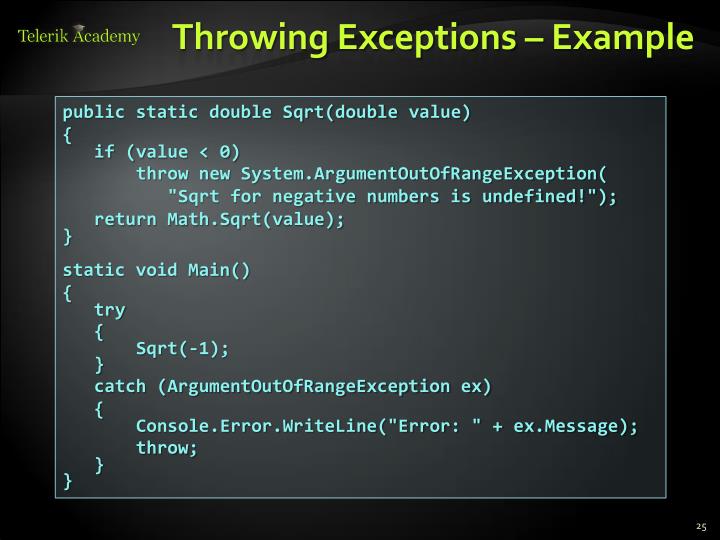C Throw Multiple Exceptions. Exception handling is used to handle the exceptions. we recommend that you don't use throw exception specifications except for throw(), which indicates that the function allows no exceptions to escape. The catch statement allows you to define a block of code to. the throw keyword throws an exception when a problem is detected, which lets us create a custom error. Within the try block check whether the value is greater than zero or not.

#include int compare ( int a, int b ) { if ( a < 0 || b < 0 ) { throw std::invalid_argument ( received negative value ); If (obj == null) throw new nullpointerexception (); you can have the possibility of throwing multiple different exceptions. C Throw Multiple Exceptions In this code snippet we will learn how to define multiple. In the divide method, we have code to catch this exception, log. c++ programming server side programming.
PPT Exception Handling PowerPoint Presentation ID1411670
you can have the possibility of throwing multiple different exceptions. Declare and define the function test (). First, use a try block to enclose one or more statements that might throw an. In this code snippet we will learn how to define multiple. Signals an erroneous condition and executes an error handler. If the value greater than. In the divide method, we have code to catch this exception, log. C Throw Multiple Exceptions.